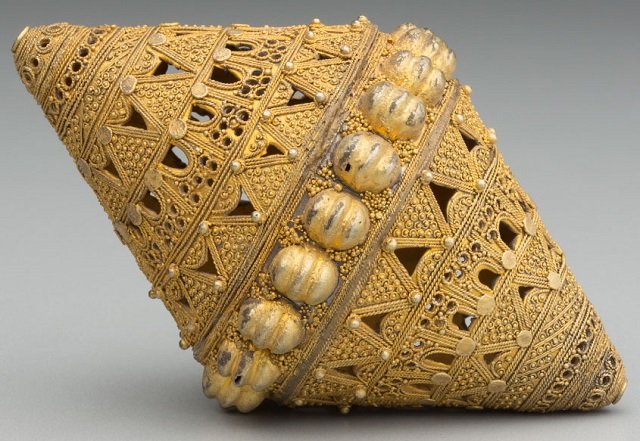Biconical bead
- Object Name
- Biconical bead
- Culture / Site
- Fulani, Senegal
- Medium
- Gilded silver
- Date
- 19th/20th century
- Dimensions
- 10.2 x 6 cm
- Credit Line
- Detroit Institute of Arts, Detroit, MI, Founders Society Purchase, Eleanor Clay Ford Fund for African Art, 77.10
- Section
- Saharan Frontiers/Connecting Trade to the Niger River
- Description
This biconical, or double-cone-shaped, bead made in the late nineteenth or early twentieth century shares the shape of biconical beads from the medieval period. It is likely that the style continued to be produced in the region from the eleventh century onward; however, the beads are not exactly comparable. This later bead was cast in silver and then covered with a thin layer of gold over its surface, a technique called gilding. The surface of the bead is embellished with wire filigree, thin metal strips applied in a pattern, and granulation, small spheres of gold.
